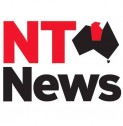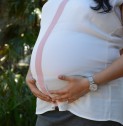Dr Matthew Hare
Senior Research Fellow
Qualifications:
Doctor of Philosophy, Charles Darwin University, 2023; Fellow, Royal Australasian College of Physicians, 2020; Bachelor of Medicine, Bachelor of Surgery (Hons) Monash University, 2012; Honours Degree of Bachelor of Medical Science, Monash University, 2012
Location:
Darwin – Royal Darwin Hospital
Biography:
Matt is a clinician-researcher whose work focuses on addressing the intergenerational impacts of diabetes and related conditions among Aboriginal and Torres Strait Islander peoples. He is a Staff Specialist and Clinical Lead for Remote Services within the Endocrinology Department at Royal Darwin Hospital. Matt is also currently a Board Director of the Australasian Diabetes in Pregnancy Society and serves on the Research Advisory Committee of the Australian Diabetes Society.
After completing his undergraduate medical training, Matt undertook specialist physician training at The Alfred Hospital and later Monash Health in Melbourne. He moved to Darwin in 2019 to complete a PhD under the supervision of Professor Louise Maple-Brown looking at intergenerational trends in diabetes and cardiometabolic health in a large data-linkage study.
Matt has a longstanding interest in the epidemiology, determinants and prevention of non-communicable diseases. Through both clinical and academic work, he is committed to working collaboratively to reduce health inequalities. He has previous experience working with the Baker Heart and Diabetes Institute in Melbourne and the MRC Epidemiology Unit at the University of Cambridge. His work has been recognised with awards and scholarships from the Australian Diabetes Society, National Health and Medical Research Council, International Diabetes Epidemiology Group, Australian Academy of Science, Diabetes Australia and the US Centers for Disease Control
Matt is currently lead investigator on multiple epidemiology and translational projects, with competitive funding from the Diabetes Australia Research Program and the Commonwealth Department of Health.

Research Themes
-

Diabetes rates in Central Australia among highest in the world, new research shows
New research has found that rates of diabetes in Central Australia are amongst the highest ever seen worldwide – and they are getting worse, with more people diagnosed every year at far younger ages than ever seen before.
-

VIDEO: Highest rates of diabetes found in Central Australia
New research has found the rates of diabetes in Central Australia is some of the highest in the world.
-

Aboriginal people in remote NT 26 times more likely to be diagnosed with Type 2 Diabetes
New research shows that rates of diabetes among Aboriginal people in remote NT are some of the highest in the world, with Central Australia suffering the most.
-
Type two diabetes epidemic plaguing NT communities
Type two diabetes has reached epidemic proportions in the Northern Territory with children as young as four diagnosed with the condition.
-

Diabetes epidemic hits Central Australia
The rates of type 2 diabetes in remote communities are some of the highest in the world and getting worse, according to new research released by the Menzies School of Health Research.
-
Diabetes in poverty-stricken pregnant women in the NT, highest in the world
Researcher and lead author Dr Matthew Hare said, for these women, poverty stricken and living in some of the most isolated regions of Australia, fresh and healthy food is often not for sale where they live or it is unaffordable.
-

NT News | Diabetes concern for mums-to-be
A new study shows diabetes in pregnant women has grown substantially in the Territory.
-
Media release | Rates of diabetes in pregnancy continue to rise in the NT
The burden of diabetes in pregnancy has grown substantially in the Northern Territory (NT) over three decades and is contributing to more babies being born at higher than expected birthweights according to a new study.
- Hare, M. J. L., Zhao, Y., Guthridge, S., Burgess, P., Barr, E., Ellis, E., et al. (2022). Prevalence and incidence of diabetes among Aboriginal people in remote communities of the Northern Territory, Australia: a retrospective, longitudinal data-linkage study. BMJ open, 12(5), e059716.
- Hare, M. J. L., Topliss D. (2022). Classification and Laboratory Diagnosis of Diabetes Mellitus. In: Bandeira F, Gharib H, Griz L & Faria M (Eds.), Endocrinology and Diabetes: A problem-oriented approach, 2nd Edition, New York, Springer.
- Wood, A. J., Boyle, J. A., Barr, E., Barzi, F., Hare, M. J. L., Titmuss, A. et al. (2021). Type 2 diabetes after a pregnancy with gestational diabetes among first nations women in Australia: The PANDORA study. Diabetes Research and Clinical Practice, 181, 109092.
- Zala, A., Maple-Brown, L. J., Shaw, J. E., & Hare, M. J. L. (2021). Current evidence and practical guidance for the use of sodium-glucose co-transporter-2 inhibitors in type 2 diabetes. Australian Journal of General Practice, 50(4), 225–230.
- Hare, M. J. L., Barzi, F., Boyle, J. A., Guthridge, S., Dyck, R. F., Barr, E. et al. (2020). Diabetes during pregnancy and birthweight trends among Aboriginal and non-Aboriginal people in the Northern Territory of Australia over 30 years. The Lancet regional health. Western Pacific, 1, 100005.
- Hare, M. J. L., Deitch, J. M., Kang, M., & Bach, L. A. (2021). Clinical, psychological and demographic factors in a contemporary adult cohort with diabetic ketoacidosis and type 1 diabetes. Internal Medicine Journal, 51(8), 1292–1297.
- Hare, M.J. L. & Shaw, J.E. (2019), Inpatient diabetes care requires adequate support, not just HbA1c screening. Medical Journal of Australia, 211(10), 452-453
- Hare, M. J. L., & Shaw, J. E. (2016). Ethnicity Considerations in Diagnosing Glucose Disorders. Current Diabetes Reviews, 12(1), 51–57.
- Hare, M. J. L., Magliano, D. J., Zimmet, P. Z., Söderberg, S., Joonas, N., et al. (2013). Glucose-independent ethnic differences in HbA1c in people without known diabetes. Diabetes Care, 36(6), 1534–1540.
- Hare, M. J. L., Shaw, J. E., & Zimmet, P. Z. (2012). Current controversies in the use of haemoglobin A1c. Journal of Internal Medicine, 271(3), 227–236.
Find these publications at Pubmed or visit our Publications Library



